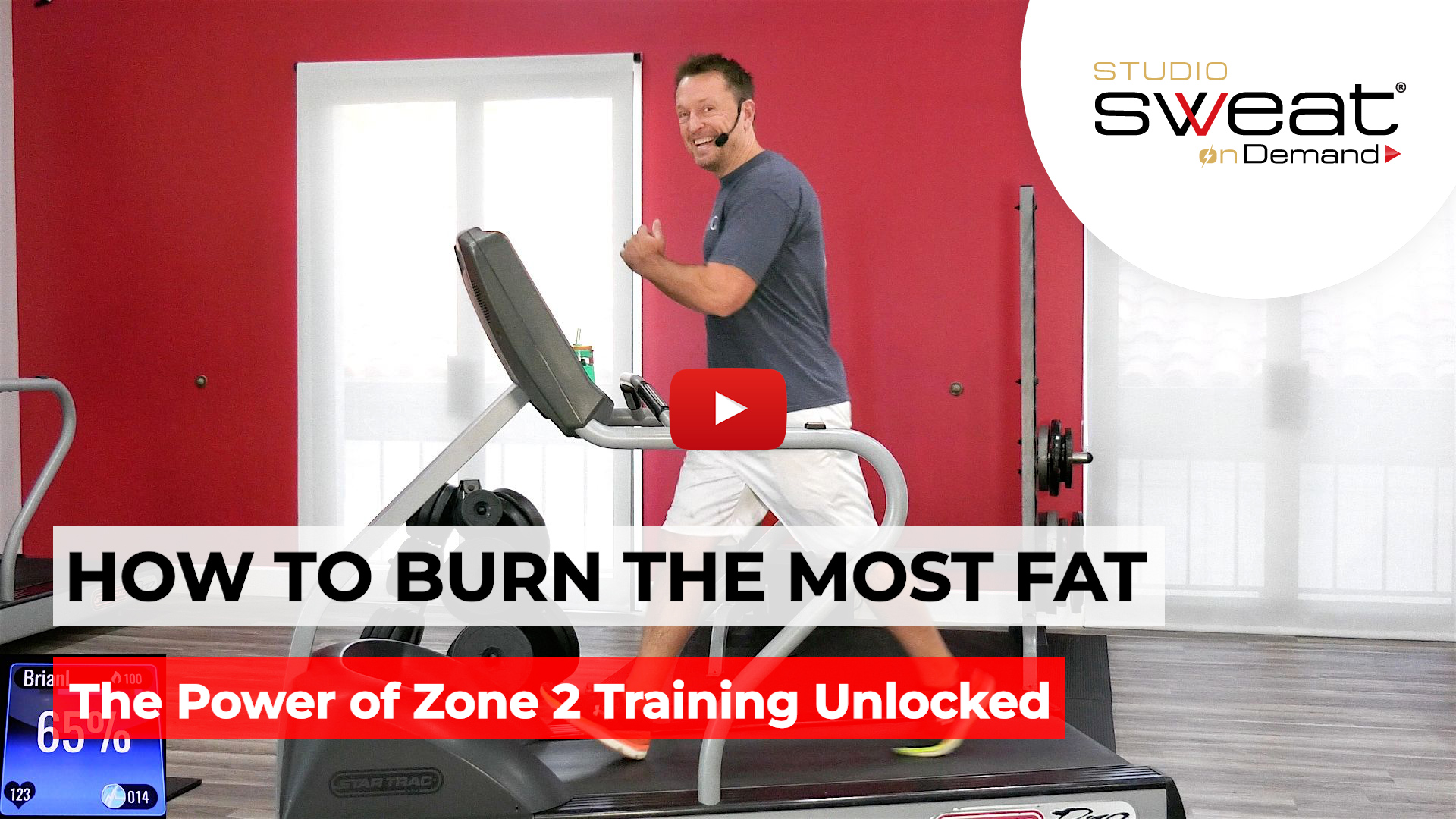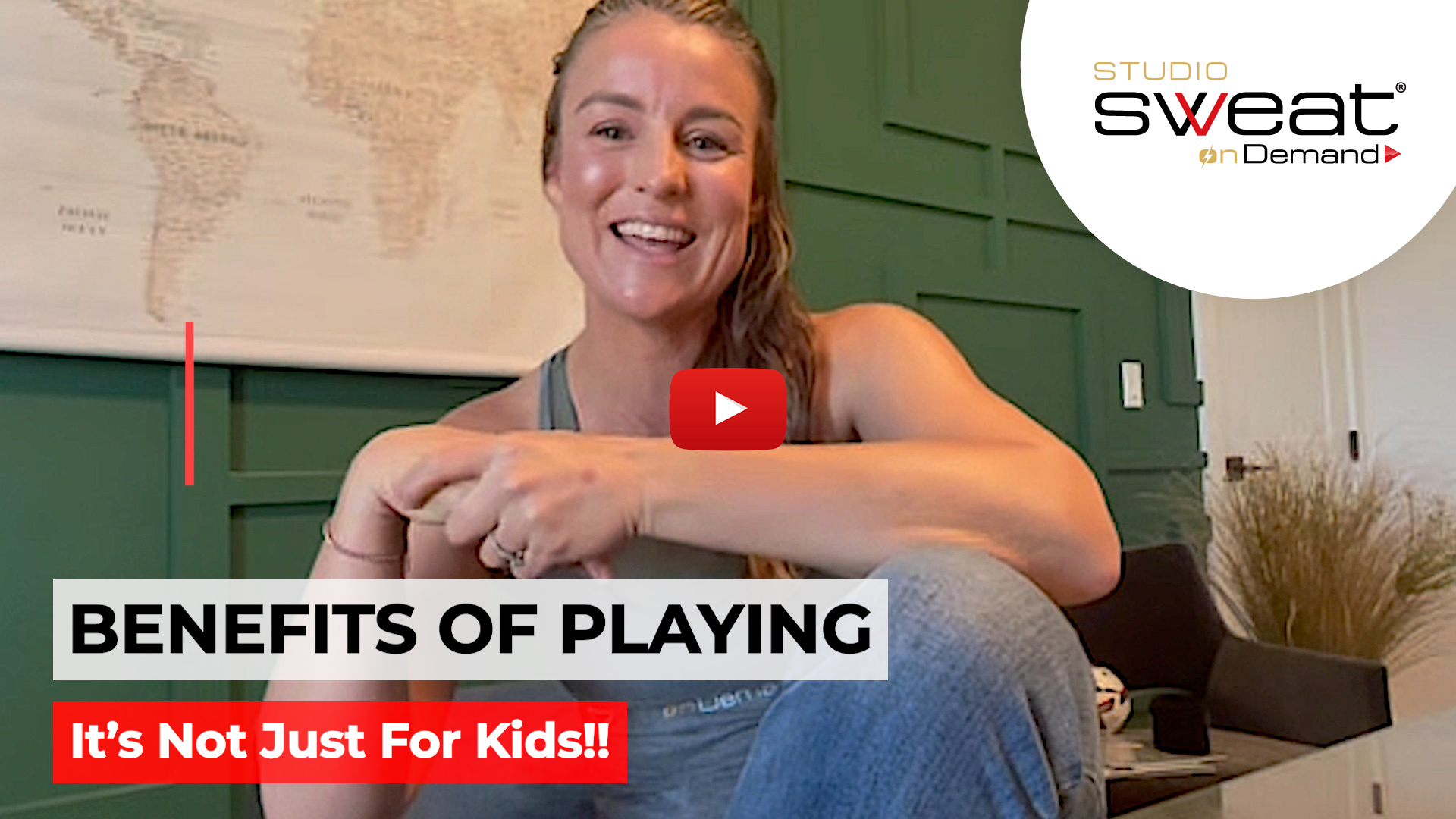Causes, Prevention, Assessment, Stretches & More!
Did you know that over 7 million patients a year visit their primary care physician or an urgent care with shoulder pain? 7… million! And, 4 million of those 7 are diagnosed with a rotator cuff injury. Crazy, right?
How ‘bout this stat… if you’re over the age of 50, you have a 1 in 4 chance of messing up your shoulder at some point. These injuries can come from athletics, from your workouts, and even (and often) from every day activities like painting a ceiling, typing, or moving a grill! You might not be surprised to learn that most often these injuries stem from repetitive motion, like throwing a ball, doing high rep bicep curls a lot, or… texting! That means every one of you is at risk here.
Now that I have your attention, I think it’s clear we need to talk about how to not become a statistic. And, if you do fall into those 7 million, or if you don’t want to, Studio SWEAT onDemand founder, Cat Kom, and Dr. Ben DeLuca are gonna help you. Yep, in this video Cat and Ben discuss shoulder injury prevention, awesome ways to assess shoulder pain, the best modifications based on your shoulder injury, how to properly warm up the shoulder, good shoulder stretches to consider, and more!
Anatomy 101, head, shoulders, knees and toes… knees and toes. Shoulder pain is directly related to many parts of our anatomy. You may go into the doctor’s office with a neck pain complaint, which very well can lead to identifying that a shoulder injury is the culprit. On the flip side, you might go in with back pain, only to learn it’s a torn rotator cuff. And, you might have gotten a shoulder impingement from too many bicep curls. That is called collateral damage my friends. This is why it’s important to first assess where the root cause of your pain is coming from. Once you identify where the pain is coming from and what movement you’re doing to cause said pain, you can be diagnosed and head down the path of shoulder rehabilitation.
In general, there are two main types of shoulder related injuries: Bicep Tendonitis and Rotator Cuff injuries. Bicep Tendonitis is inflammation and irritation of the biceps tendon, which runs along the inside of your upper arm and connects your bicep muscle with bones in the shoulder. This type of injury would often cause pain in the front of the shoulder, and you might feel this pain primarily in push activities, such as a push-up. Rotator Cuff injuries can involve any or all of the 4 rotator cuff muscles. With this type of injury, you could experience pain in the upper arm, back, and even your chest. You might feel this pain when doing side or lateral movements, front raises, overhead presses, and more. You might even feel this pain doing something as simple as combing your hair!
So, step 1… Dr. Ben suggests you either go to a professional or try to assess your own pain by moving through a series of shoulder rotations and arm raises, trying to feel which ones cause any sort of sharp pain, tightness, or limited ROM. Once you know which rotations or motions trigger “bad” pain, it’s important to know what to do next.
One of the first things Cat and Dr. DeLuca both strongly recommend after you figure out which rotations and movements hurt is that you keep moving. Keeping your circulatory system going promotes positive blood flow to all areas of the body and is a very important step towards healing any injury. Going through a comfortable and even slightly challenging ROM with an injured joint is important in keeping the muscles moving as not to let the area atrophy (muscle weakening). Of course, if your injury happened due to trauma or is a medical surgery situation, obviously that is a different story and a medical professional should be consulted.
Beyond keeping moving, in order to prevent and/or heal shoulder injuries, there are 5 things trainer Cat and Dr. Ben say are key.
- Always warm-up your upper body (namely the shoulders) before any workout, whether it be in the gym or the garden.
- Incorporate more pull exercises and activities into your daily workout or routine.
- Stretch your upper body.
- If it hurts, don’t do it.
- Just because your shoulder hurts, it’s not an excuse to not workout! Identify the pain and then work around it until it’s better.
So, check out this awesome vlogcast to see expert trainer Cat and Dr. Ben DeLuca demonstrate some great shoulder warm-ups, exercises, and stretches to help you figure out how you can keep your shoulders strong and healthy for a lifetime!

















Comments - 0